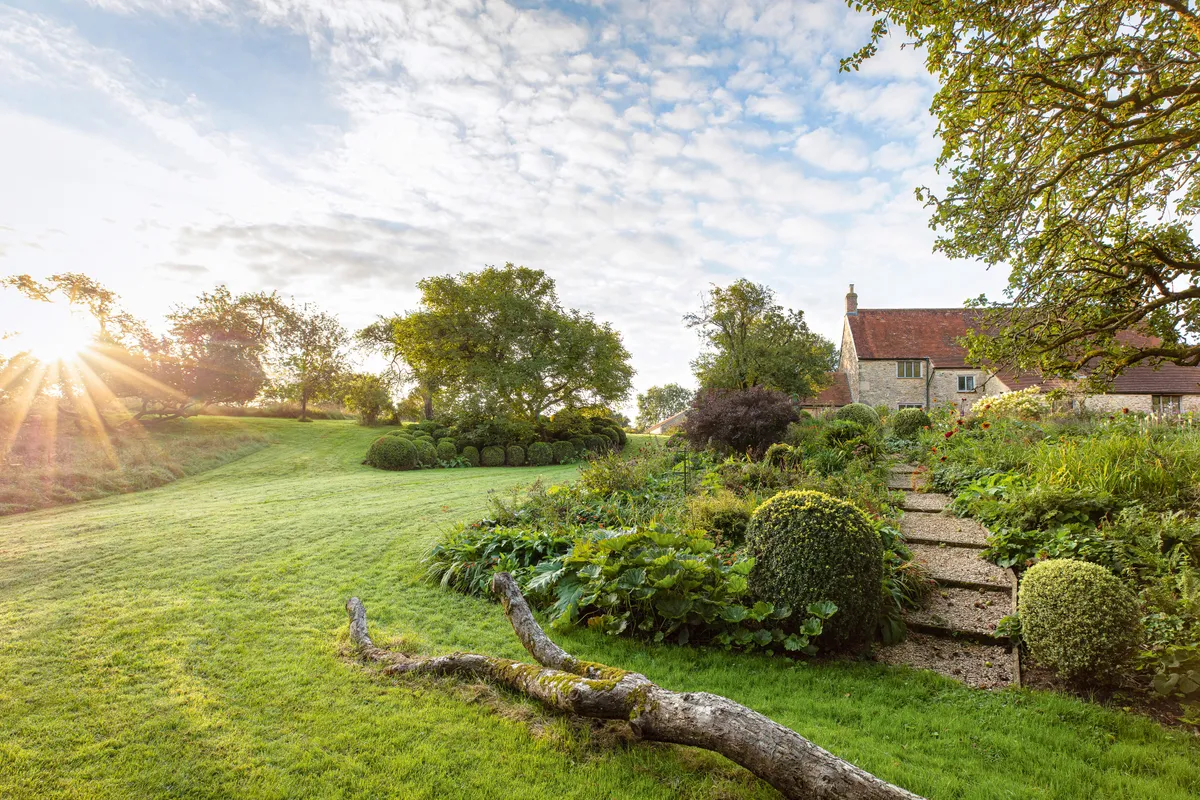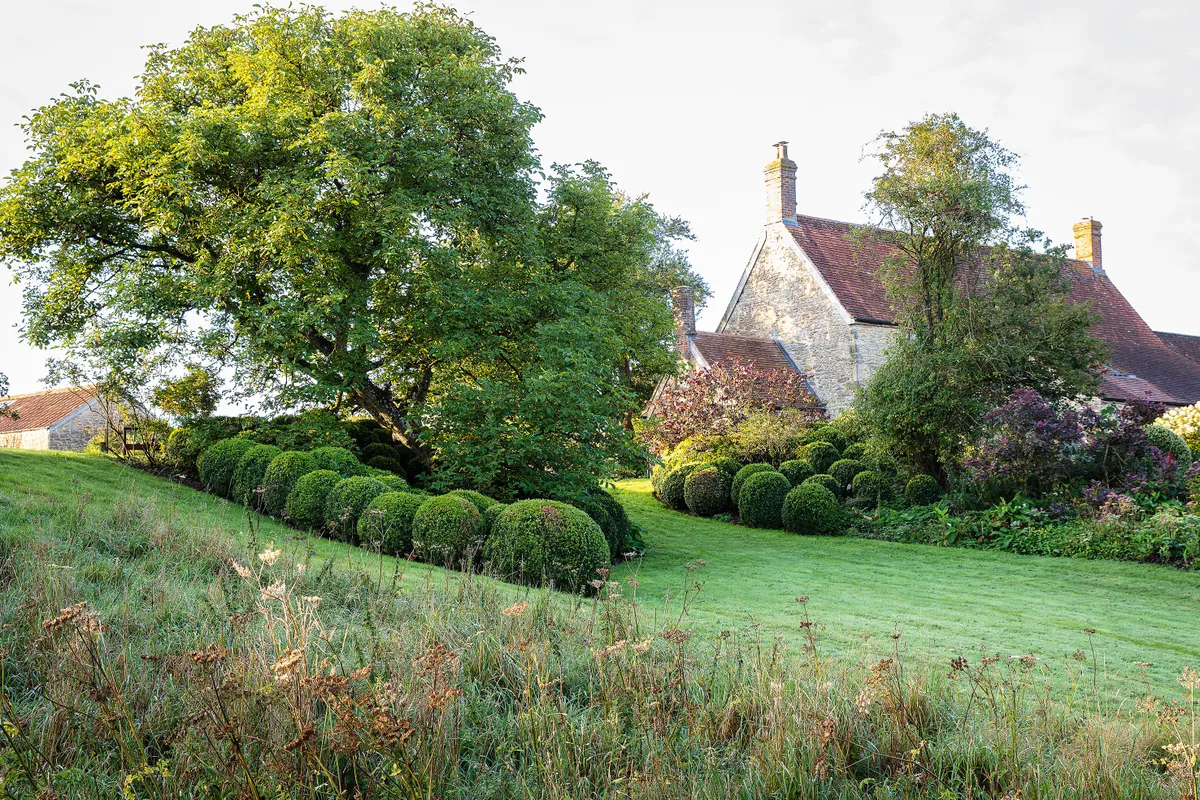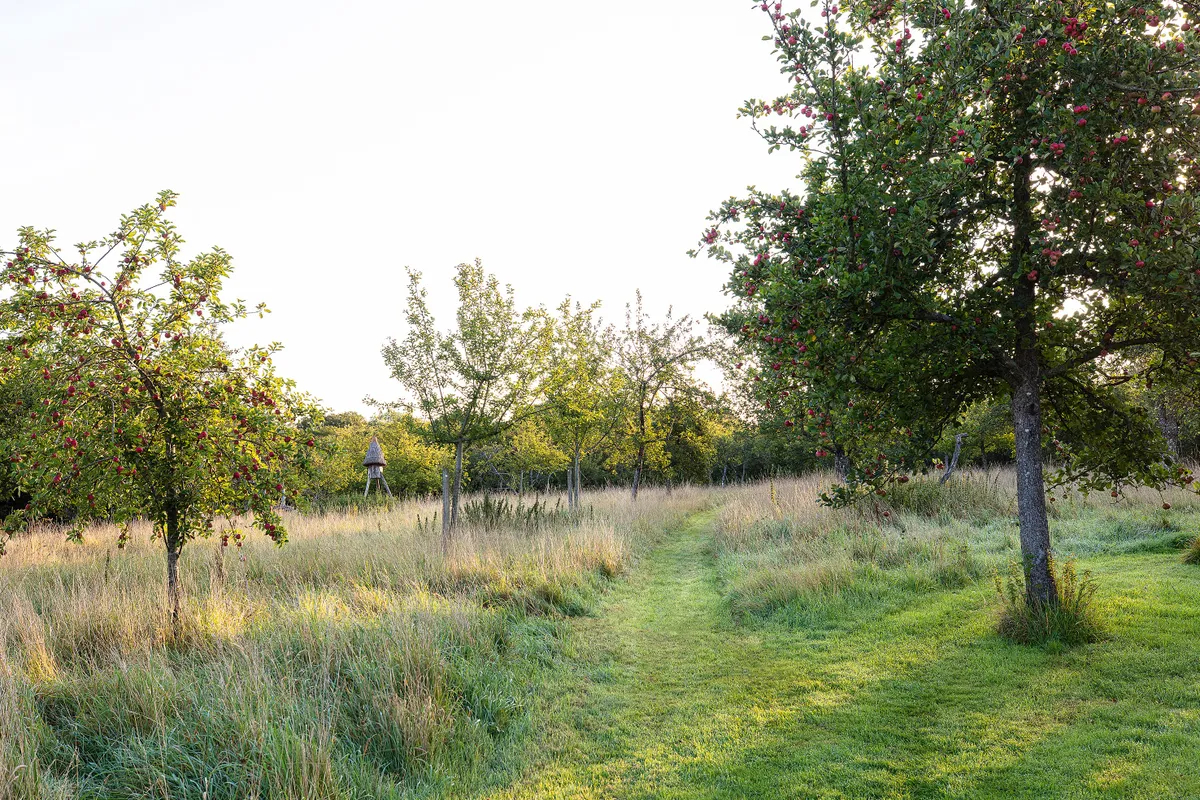It is nearly 20 years since Cooks Farm last featured in Gardens Illustrated (issue 83). “The garden has evolved somewhat since then,” laughs its creator, Patricia Stainton. “As have I…”
In those days, Patricia was at the forefront of a new style of perennial planting – loose, naturalistic and wildlife-friendly – that was then very novel in the UK (less so in Germany and the Netherlands), but has since become ubiquitous.
The rich, jewel-like colours she favoured – claret and crimson, deep purple and all-but-black – at a time when gardening fashion dictated ladylike pastels, have since been picked up by the likes of gardeners Sarah Raven and Monty Don, and are now widely admired. (Meanwhile Patricia has been saving the seed of her darkest and most sumptuous flowers every year, to produce poppies, astrantias, antirrhinums and sweet Williams in ever deeper and swoonier shades.)
Today, everyone understands the value of shrubby salvias to deliver long months of late-season colour. Back then, they were collector’s plants. Above all, the idea of selecting planting to sustain populations of bees, moths and butterflies, once seen as mildly eccentric, if laudable, has now become mainstream. Read on for more about Cooks Farm.
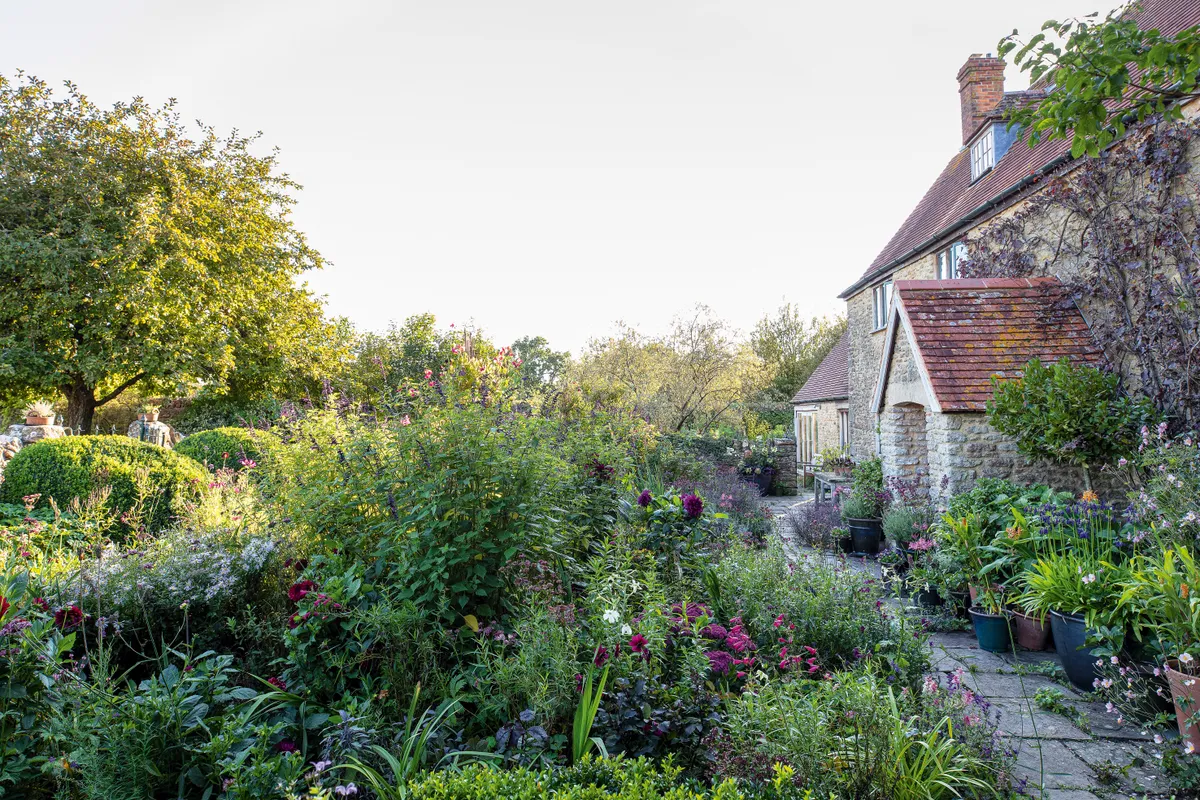
The area in front of the house was originally a dwarf box parterre enclosing softer planting. It has since evolved into an intensively planted area where Patricia enjoys the dynamic nature of gardening, relishing the changes of colour, mass and texture that occur through successive seasons.
In Brief
Name Cooks Farm. What A garden awash with scent and sumptuous colour, dissolving magically into its surroundings. Where Somerset. Soil Heavy Burtle clay, in need of constant improvement, wet in places. Size Two acres of garden set among 40 acres of conservation landscape. Climate Relatively sheltered, but a frost pocket. Hardiness zone USDA 9.
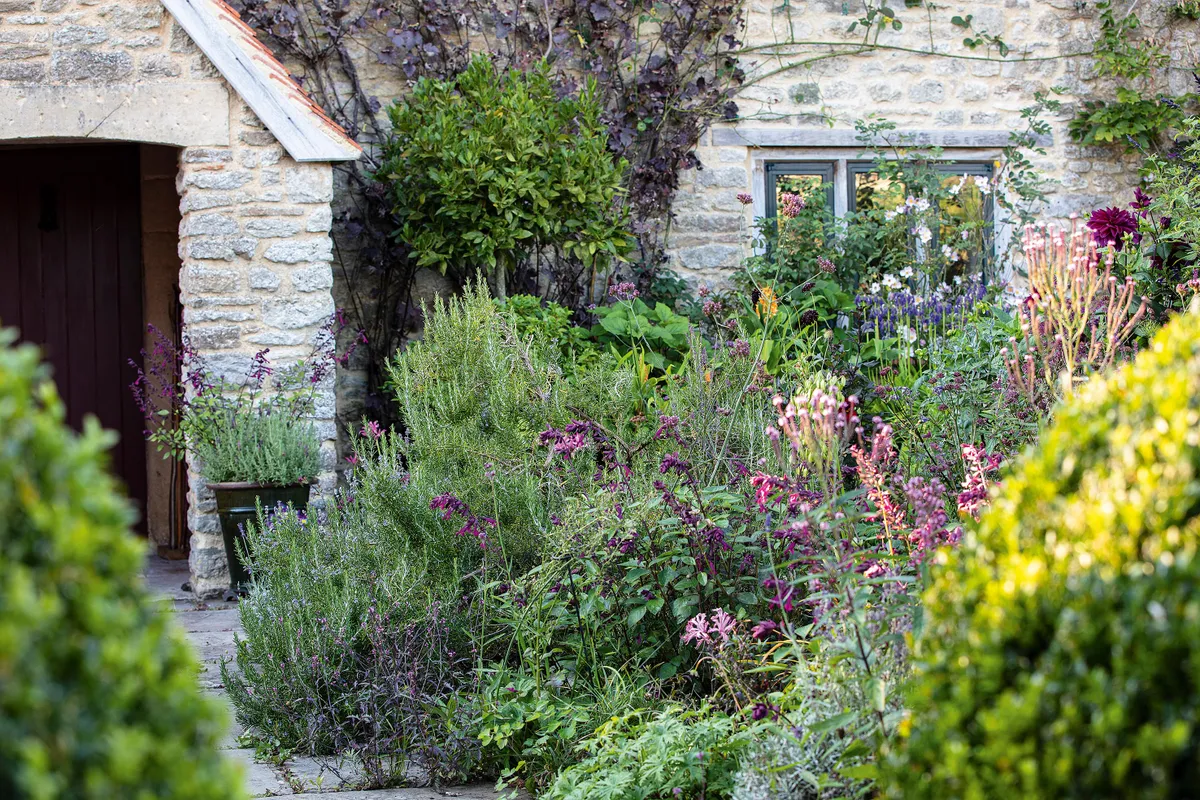
The path to the front door is the ideal place for intricate plantings of small and unusual subjects – where both the flowers themselves and the passage of the seasons can be observed in detail. Here Patricia grows delicately coloured verbenas, nerines and sweet Williams (Dianthus barbatus) along with deliciously fragrant Salvia Love and Wishes (= ‘Serendip6’), lavenders and rosemary.
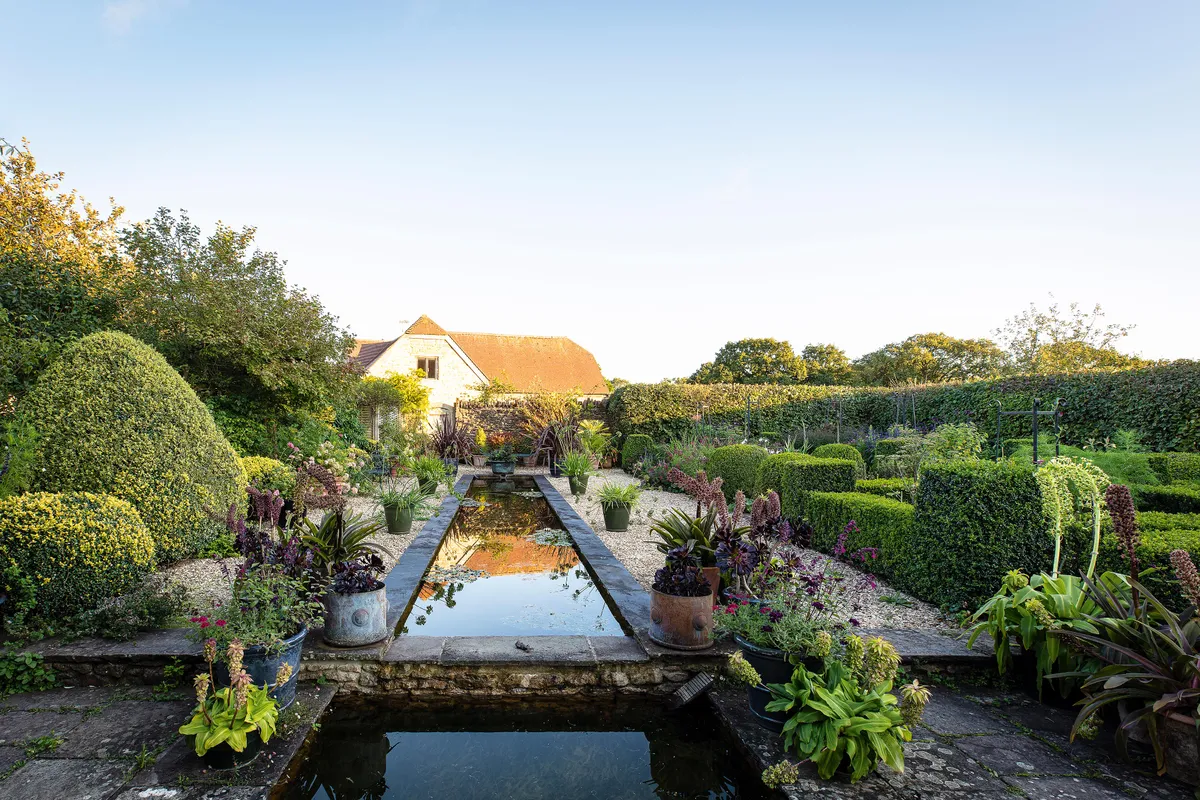
Along the rill are pots of Eucomis – deep-red Eucomis comosa ‘Sparkling Burgundy’ and fresh-green Eucomis bicolor – along with Aeonium ‘Zwartkop’, and several different types of agapanthus. The dark tones of the succulents are picked up by two towering specimens of Phormium ‘Dusky Princess’ at the far end of the rill.
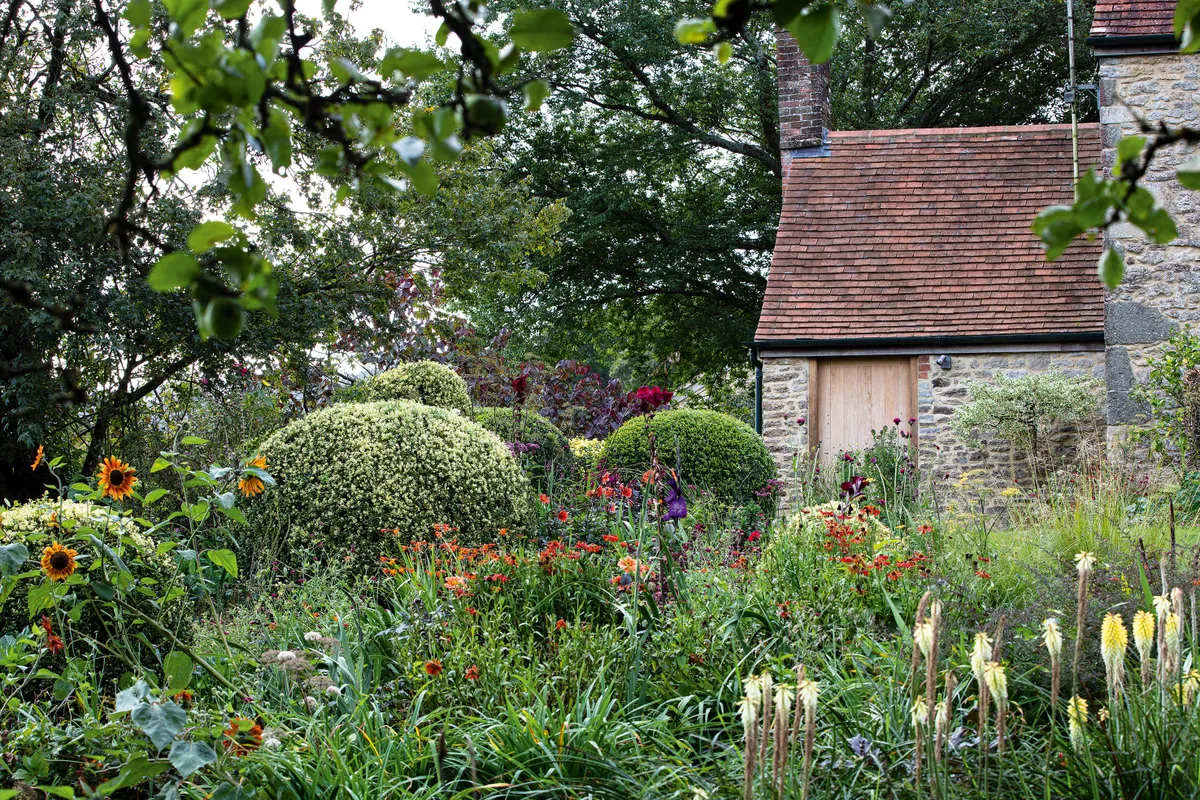
In these borders behind the house, Patricia’s romantic, blue-to-purple schemes give way to hotter, more intense colours, employing plenty of orange, purple and red. Here she uses sunflowers and heleniums (especially Helenium ‘Moerheim Beauty’), deep-red dahlias and purple gladioli, set off by elegant Kniphofia ‘Little Maid’ and different colours of box. Cercis canadensis ‘Forest Pansy’ provides a splash of reddish purple in the background.
12 key plants from Cooks Farm
Lythrum salicaria
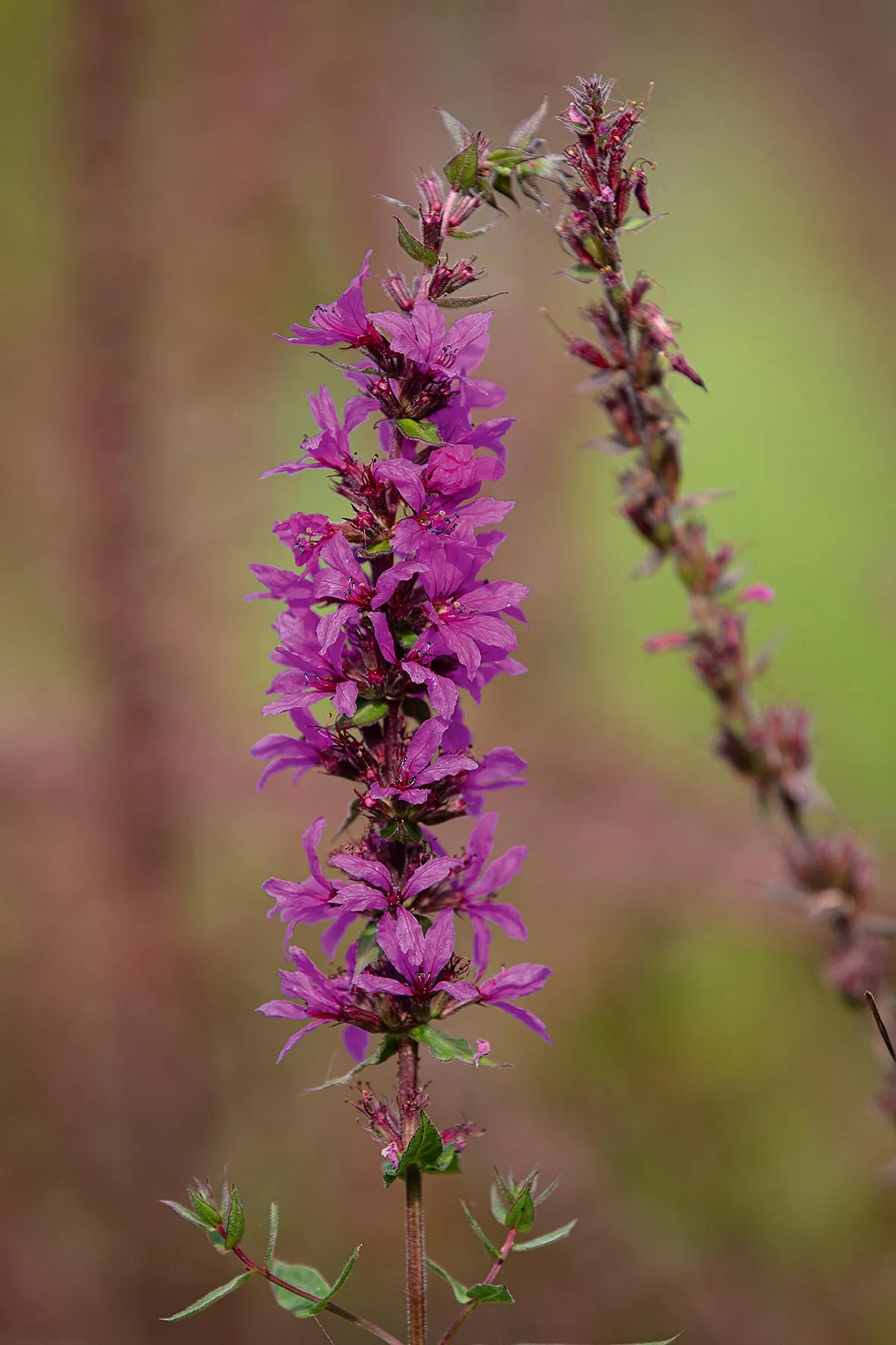
Purple loosestrife is a wildflower of ponds and marshes, where its lofty spikes of magenta flowers sustain long-tongued insects such as brimstone butterflies, red-tailed bumblebees and elephant hawk moths. 1.5m. RHS H7, USDA 4a-9b.
Helianthus annuus ‘Earthwalker’
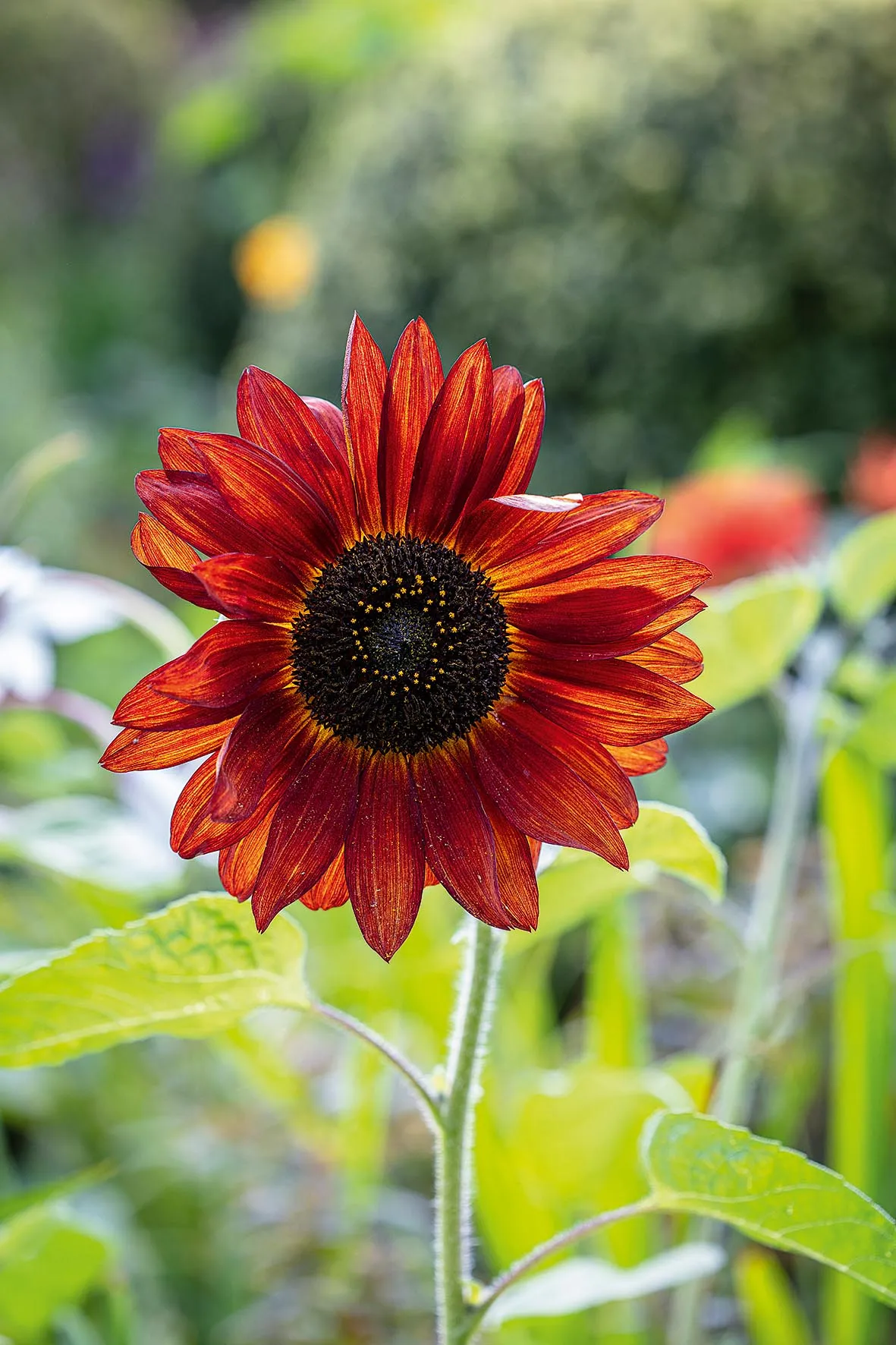
To add height and vivacity to a hot border, Patricia calls on this dramatic sunflower, with abundant blooms in tawny and terracotta shades. 3m. RHS H4.
Kniphofia ‘Little Maid’

The daintiest of pokers with slender spikes of tubular flowers that open lemony-white from lime-green buds, and fade to a warm cream. 60cm. RHS H5.
Astrantia major hybrid
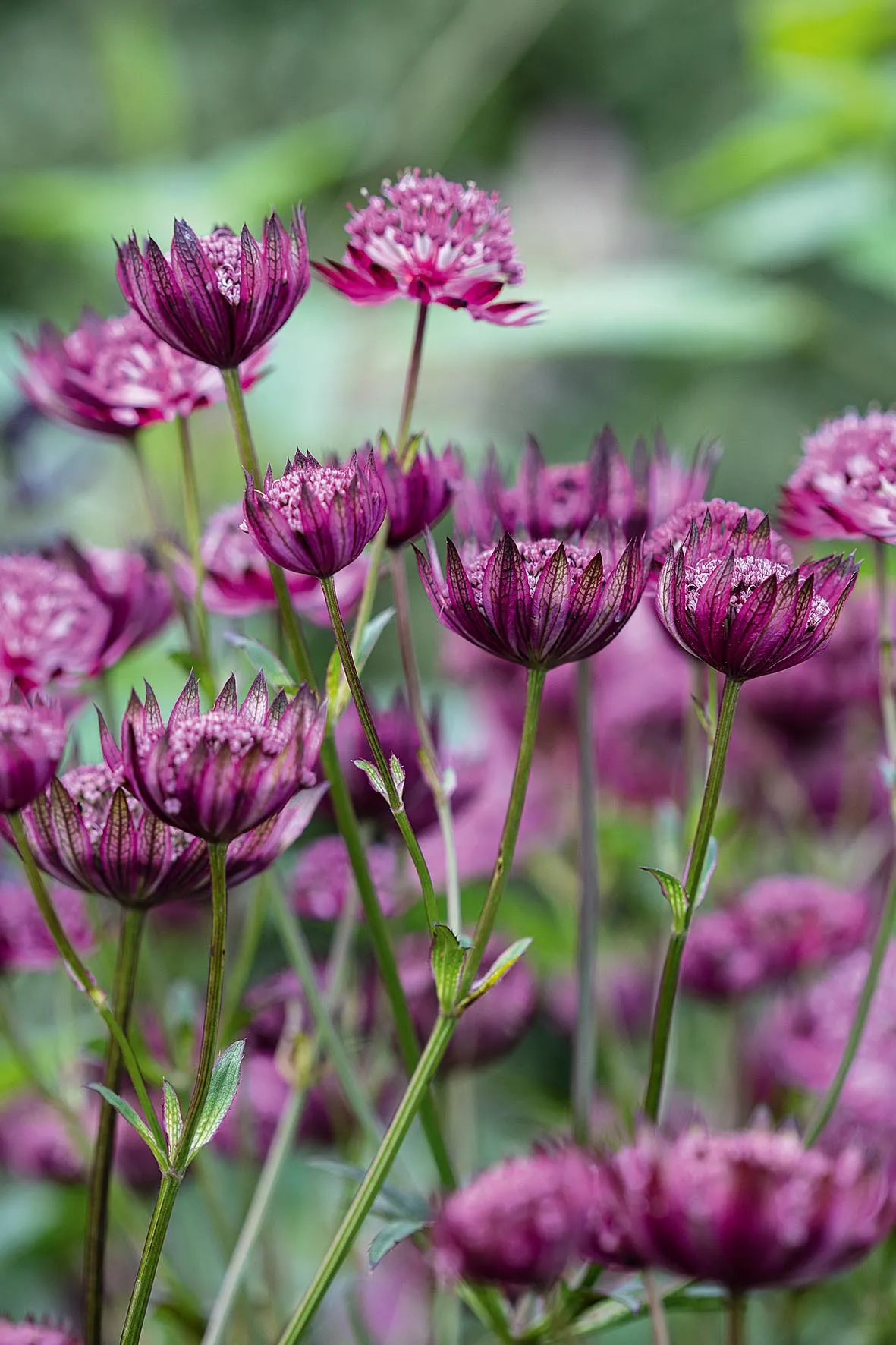
Patricia loves astrantias for their easy-going nature and long flowering period, and has many in her garden. They hybridise freely, and this tall, dark and handsome black-stemmed example is probably a cross between A. major ‘Venice’ and A. ‘Moulin Rouge’. 80cm. RHS H6.
Succisa pratensis
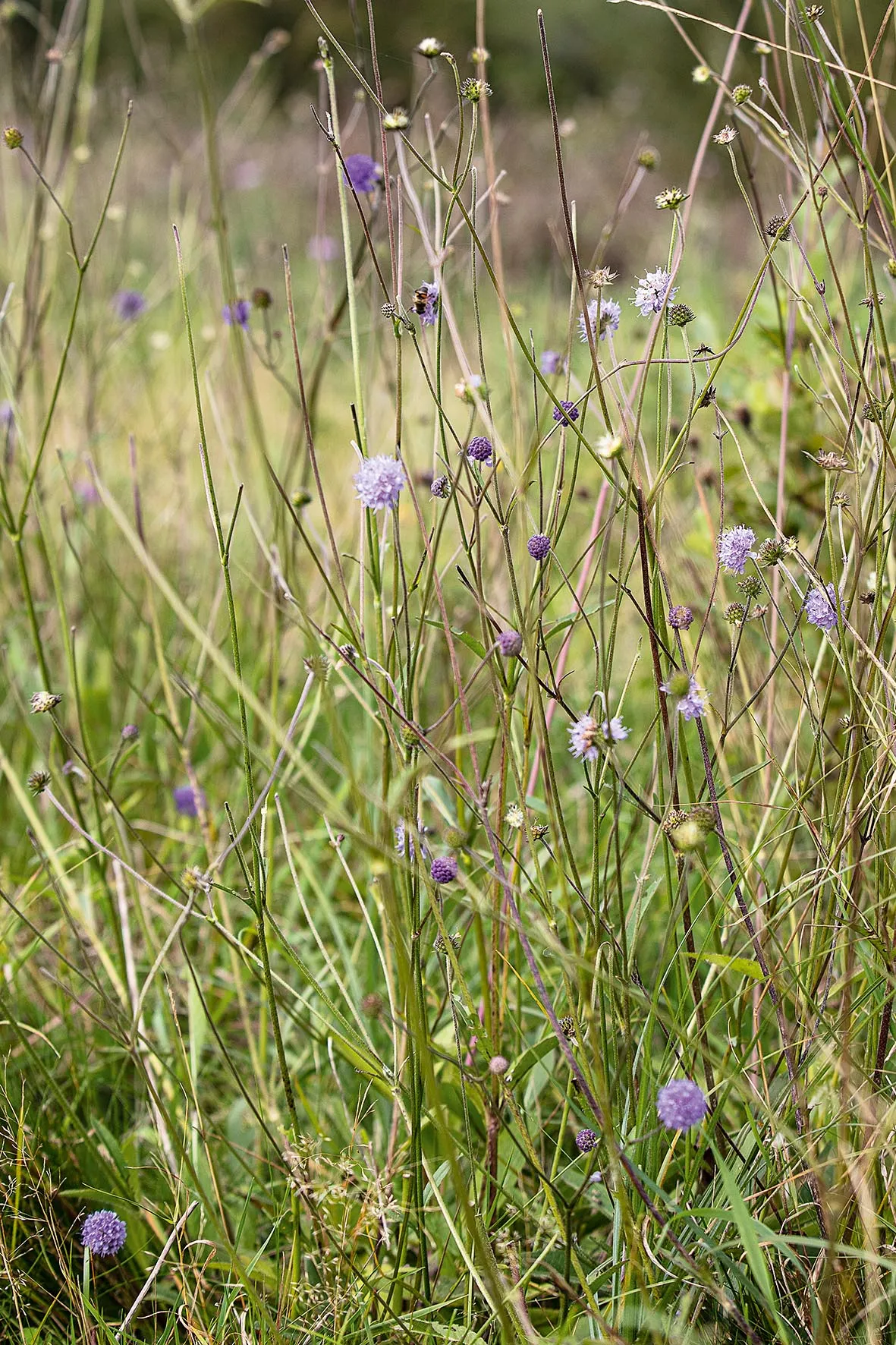
The pincushion heads of the damp-loving devil’s bit scabious are the primary food source of the declining marsh fritillary butterfly, which is classified as a priority species under the UK Post-2010 Biodiversity Framework. The leaves are long and oval, unlike those of field scabious, which are dark-green, hairy and deeply lobed. 60cm. RHS H7.
Monarda ‘Prärienacht’
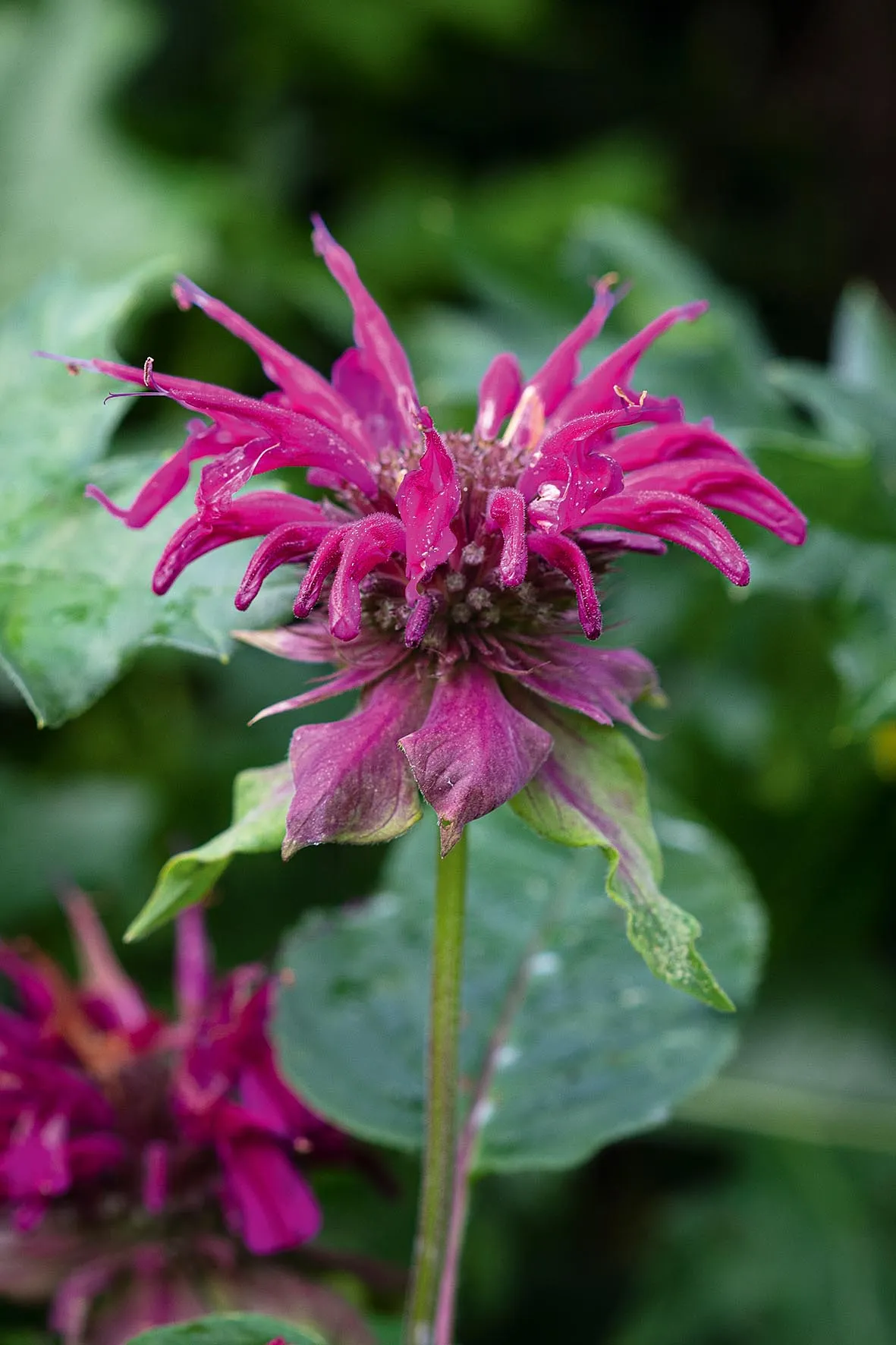
Best known for its fragrant leaves, but valued by Patricia as a magnet for bees, growing well in moist, fertile soil in full sun or partial shade. 90cm. RHS H4.
Salvia Love and Wishes (= ‘Serendip6’)

A justly popular, shrubby salvia with a small, neat habit, bearing long-lasting, bold-magenta flowers on contrasting dark calyces. Leaves are small, dark and aromatic. 80cm. RHS H3.
Aeonium ‘Zwartkop’
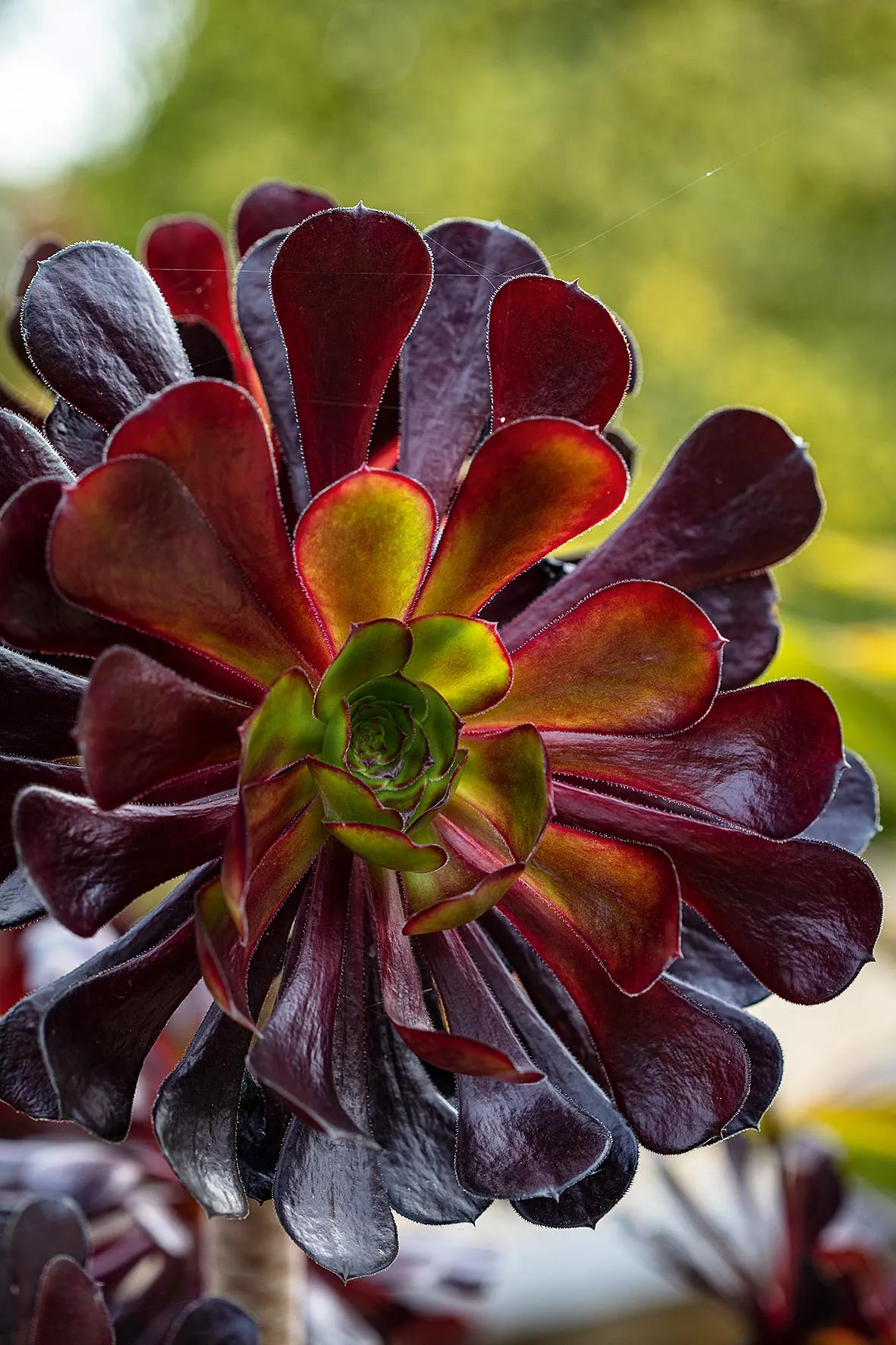
An easily propagated, evergreen succulent, with glossy, dark rosettes borne on woody trunks. The foliage grows darker, the hotter and sunnier its spot. Best grown in pots and set out in the garden in summer. 1-1.5m. AGM. RHS H1C.
Scabiosa atropurpurea ‘Ace of Spades’
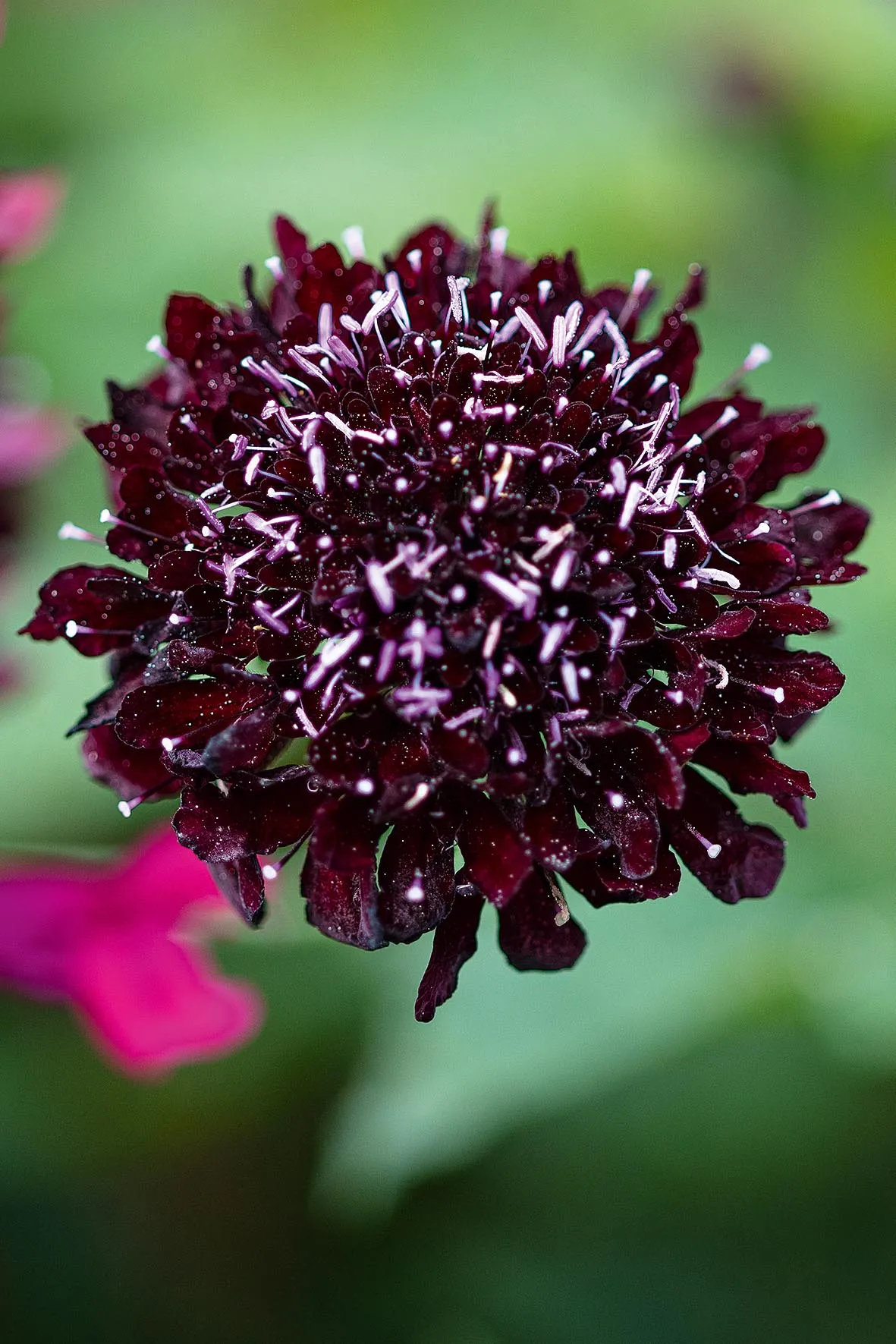
An essential component in Patricia’s almost-black repertoire, ‘Ace of Spades’ is grown as an annual from seed each year. It bears very dark purple, delicately scented pincushion flowers up to 5cm across. 60cm. RHS H4.
Eryngium planum
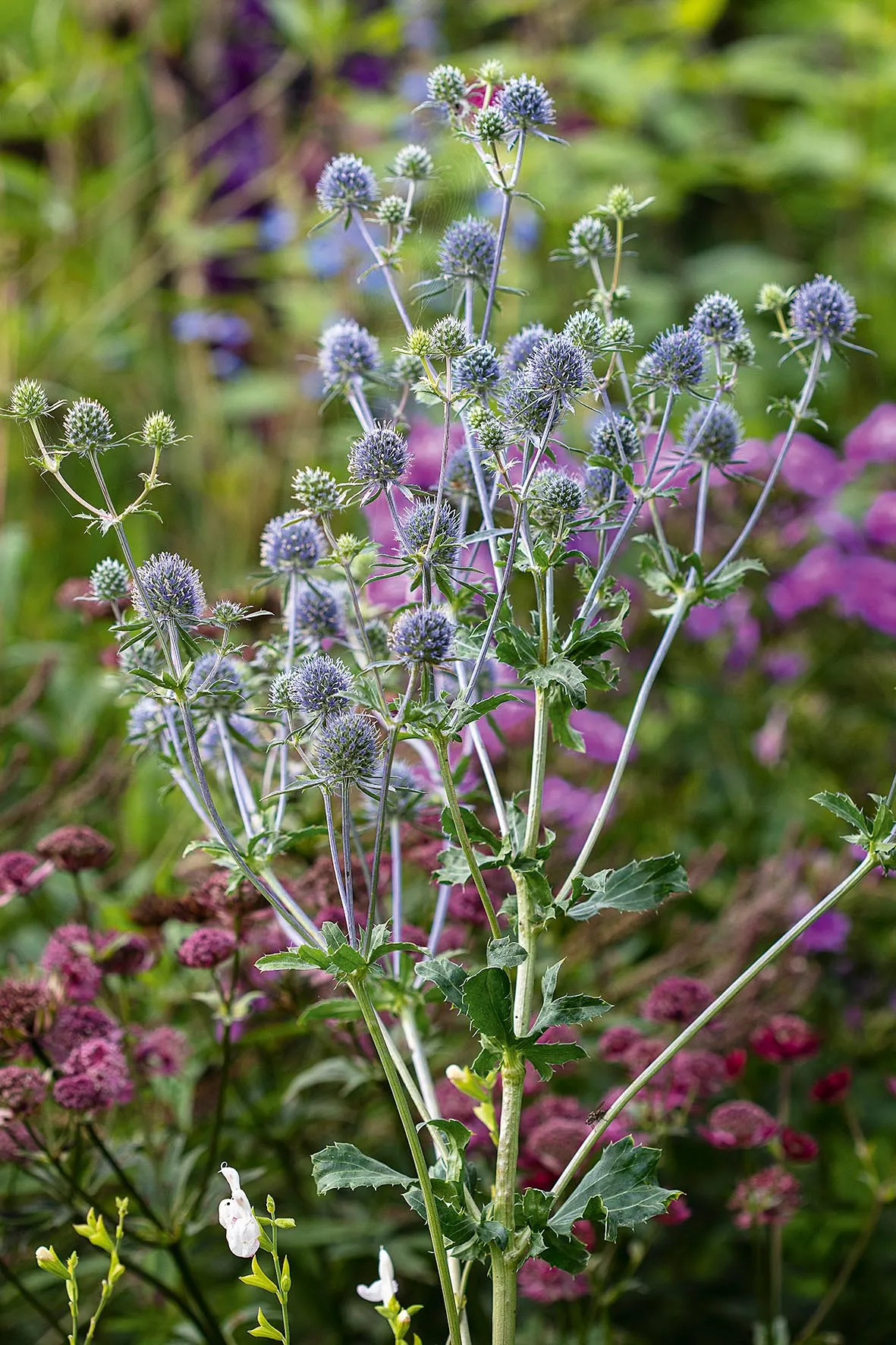
An elegant, small-flowered sea holly of upright bearing. Rounded, thimble-sized flowers are surrounded by a ruff of slender bracts, borne on long, very branched, blue stems above mid-green leaves. 90cm. RHS H5, USDA 5a-9b. Read our plant profile on eryngium.
Eucomis bicolor
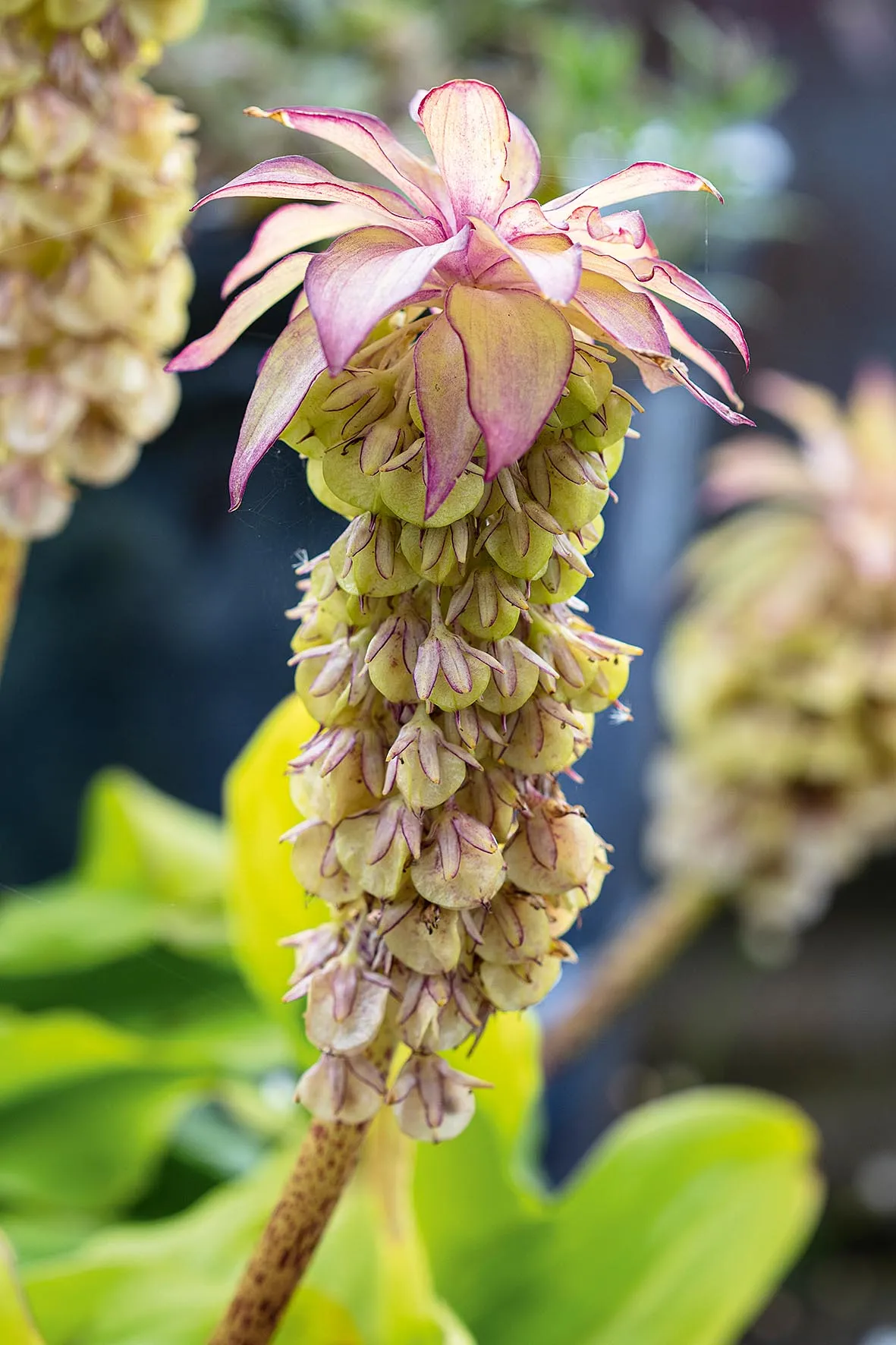
With its pineapple flowers and lush, tropical leaves, this plant looks wildly exotic, but is relatively easy to grow, being frost-hardy and welcoming moisture, unlike many South African bulbs. 50cm. AGM. RHS H4.
Salvia uliginosa
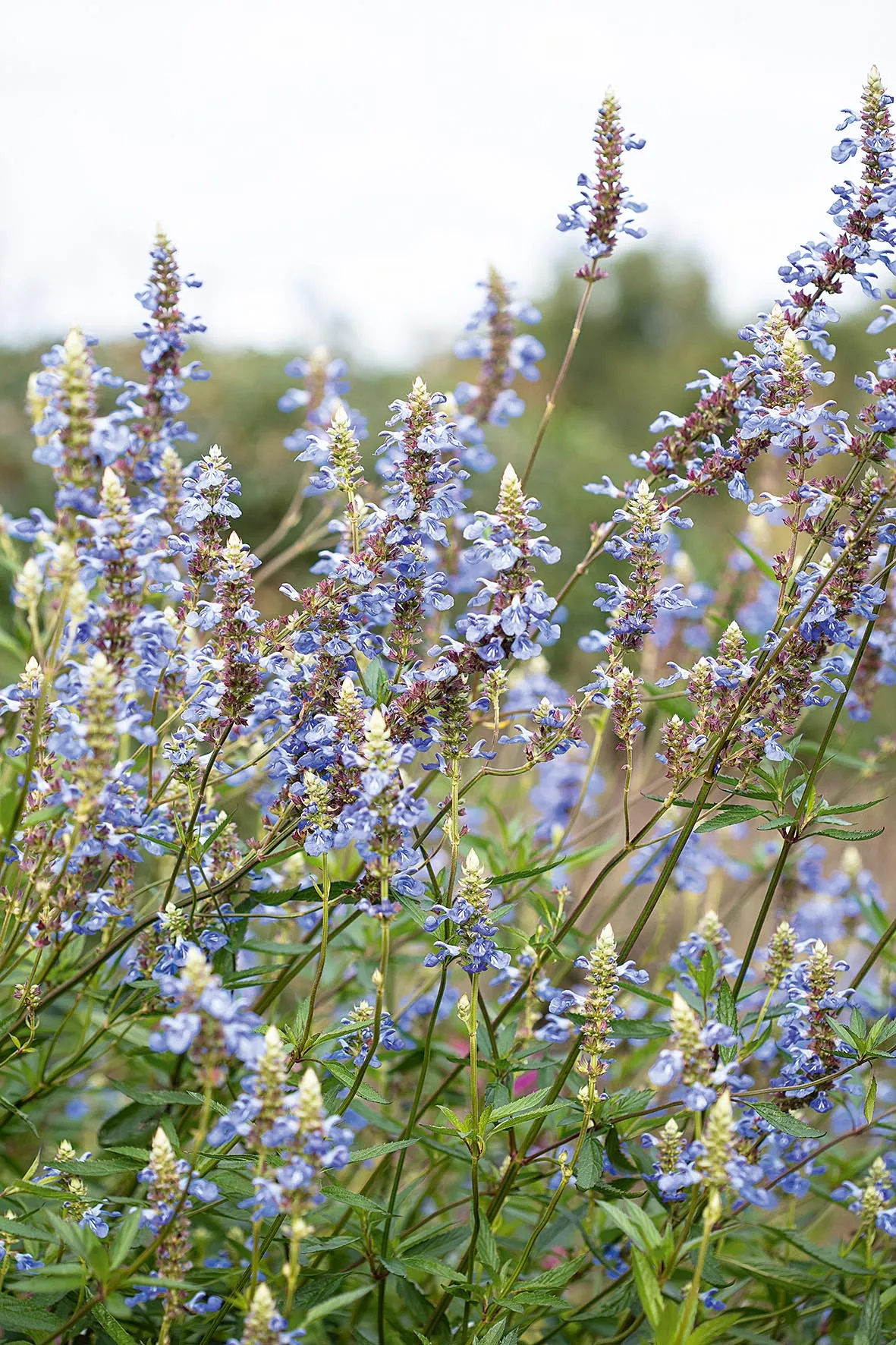
Glorious, large, vigorous, sky-blue salvia that thrives in a warm, sunny spot in soil that remains moist, but not waterlogged. Protect the crown of the plant with a mulch over winter.2m. AGM. RHS H4.
